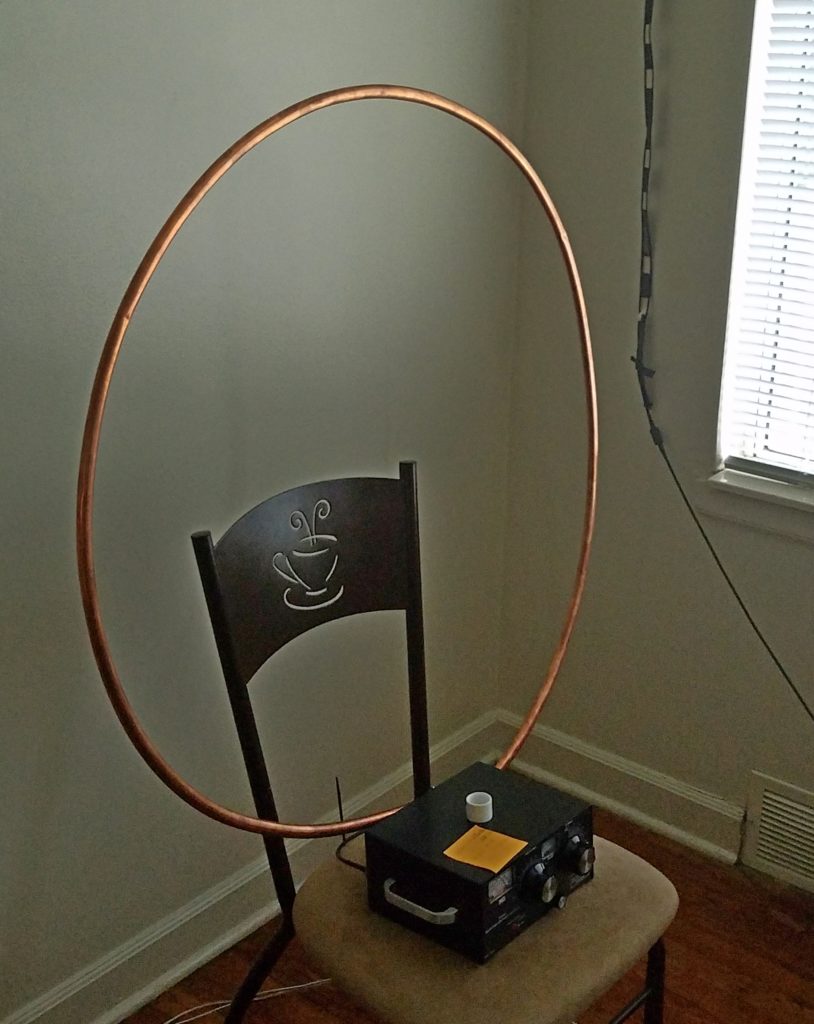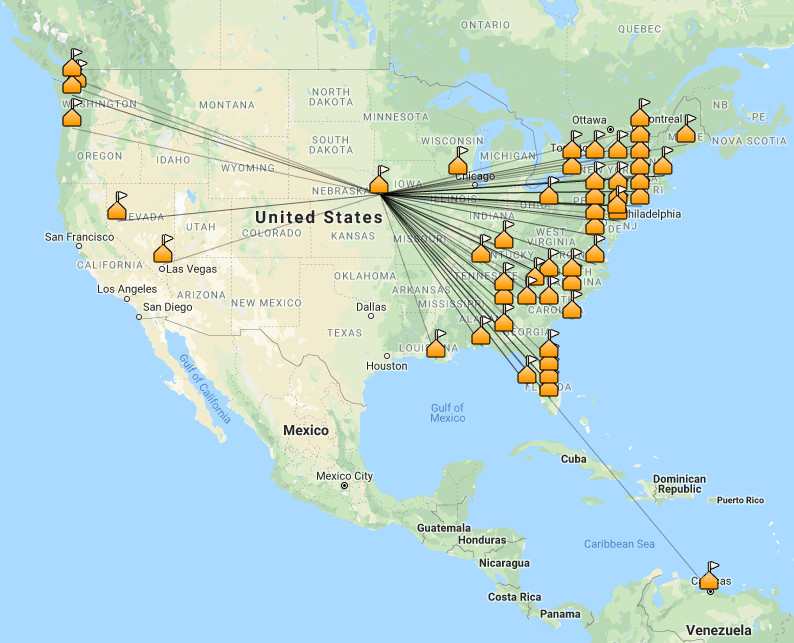To you apartment dwellers – I feel your pain! When I had my first thoughts about getting on HF, my main concern was what antenna system will I use? After doing some research I realized that it will be a compromise anyway, so the question was what kind of compromise I was looking for in order to not get completely disappointed and turned off from pursuing this exciting part of the radio hobby?
The main issue here is that the longer is the wavelength of the signal that you want to work with, the longer your antenna ideally needs to be. And HF deals with really long wavelengths – most common bands now are 20 m and 40 m, but the amateur privileges extend all the way to 160 m! Of course there will be plenty of people who would suggest to just string a dipole along the walls. While for some it may work, I believe that it is hardly a viable option for most, and will still be a compromise because of the dipole’s geometry (unless you have VERY long walls!), it being enclosed inside a building, and sometimes its elevation above ground.
There are plenty of options for antennas that are more compact, however contain elements that somewhat compromise their performance. But when we say “compromise” – we should remember that (1) this compromise is compared with a somewhat ideal situation, and (2) any antenna is better than no antenna at all. Usually such antennas contain loops or coils that make them electrically longer, keeping the linear dimensions within reasonable limits.
This is not a comprehensive review by any means, but rather a recap of my thoughts at that time. For this reason, I am not mentioning any loaded verticals (such as Super Antenna that I own for different purpose, or Wolf River Coil, Buddipole, or any other analog – you name it). Why? All these antennas require radial systems for their maximum performance, which is simply impractical in the apartment. Plus, their whips are also usually too long to fit under the ceiling. Thus I did not even consider them at that stage.
Among relatively compact antennas that do not require radials, I looked at several such as TAK-tenna (that you can even home-brew), or MFJ-2389. In particular, I really liked the TAK-tenna concept – however both it and the MFJ multibander were still too large to be mounted inside the apartment. And in all honesty, the potential performance of the 2389 raised some questions for me.
After a few weeks of extensive reading and watching video reviews, I narrowed my choice to loop antennas. One of the functional particularities of these high-Q systems is that their range of low SWR is very narrow – hence they need to be tuned even within a single band. However, the same high Q comes with excellent noise rejection ability. Famous Chameleon antennas, as well as analogs from other manufacturers, often come with automatic tuning – but they also have a higher price tag. MFJ also offers a range of magnetic loop antennas, but I decided to purchase a loop tuner and try making an antenna myself.

MFJ has a line of three small loop tuners. All three of them are able to tune a loop made of any conductor of a certain length (depending on the band that you would like to work). Ideally, the loop should be of circular shape – however, any closed-loop shape is acceptable and will work. Moreover, every loop can cover multiple bands: for example, my 10-ft copper loop was optimized for 20 m, but I was able to tune it to SWR less than 1.5:1 at 30 m, as well as at 17 and 15 m.
The difference between three models is essentially how many meters do you have on the tuner: the MFJ-933 has only tuning anf matching adjustment knobs, while MFJ-935B also offers the antenna current meter. The highest model, MFJ-936B, also has a built-in power and SWR meter, and since I was only making my first steps and wanted to see and track as many details as possible, I decided to purchase the latter.
Right off the box, it was a little bit counterintuitive to tune – however, once I had a little experience, it only took me a few seconds to adjust to the best match. Of course it’s not what a contester would look for – but it got me on the air! I limited myself to ~30 W as the antenna was sitting on the chair just a few feet away from me. In addition to that, some of my home electronics (like the monitor at 20 m or router at 40 m) were not happy if I tried higher power. The receive audio was sharp and quiet, and I used to get great signal reports. Within my first month, I made over a dozen QSOs with hams all across the East Coast – and that’s only SSB.

in September 2018.
As my power was limited, I had a period of “FT8 fever” in my early time on HF. And while I quickly lost interest to this mode after having installed an outdoor antenna, I still think it is very useful to illustrate the propagation and test reception ability of the setup. The map below shows 100+ FT8 contacts that were made during the same first month – not surprizingly I was able to reach farther, however, the dominance of the East Coast is obvious.

There is a multitude of factors that contribute to the fact that I had more success reaching stations to the east of my location rather than to the west. First off, there’s simply more hams (and higher population density in general) in this part of the country. However, several radio amateurs suggest that propagation may also be a variable in this equation. For example, in one of the discussions in the Parks on the Air Facebook group, Andrew NØAJS suggested that when 20 m becomes relatively “short”, the Rockies can get in the way of the first skip and thus hinder further propagation of the signal westward.
Even though it comes with some limitations, the loop tuner is a reasonably-priced, compact and lightweight device that gets you on the air even if it sits on the chair near the window. Some hams also use it as antenna for their portable setups – however I have a different opinion about this. I had some fun with my loop antenna, and would certainly keep it in my shack, had I not have an opportunity to install a vertical antenna outside of my apartment. How and why I chose my Hustler 6BTV, and how it performed in its first year – I will summarize my thoughts and experiences a little later.